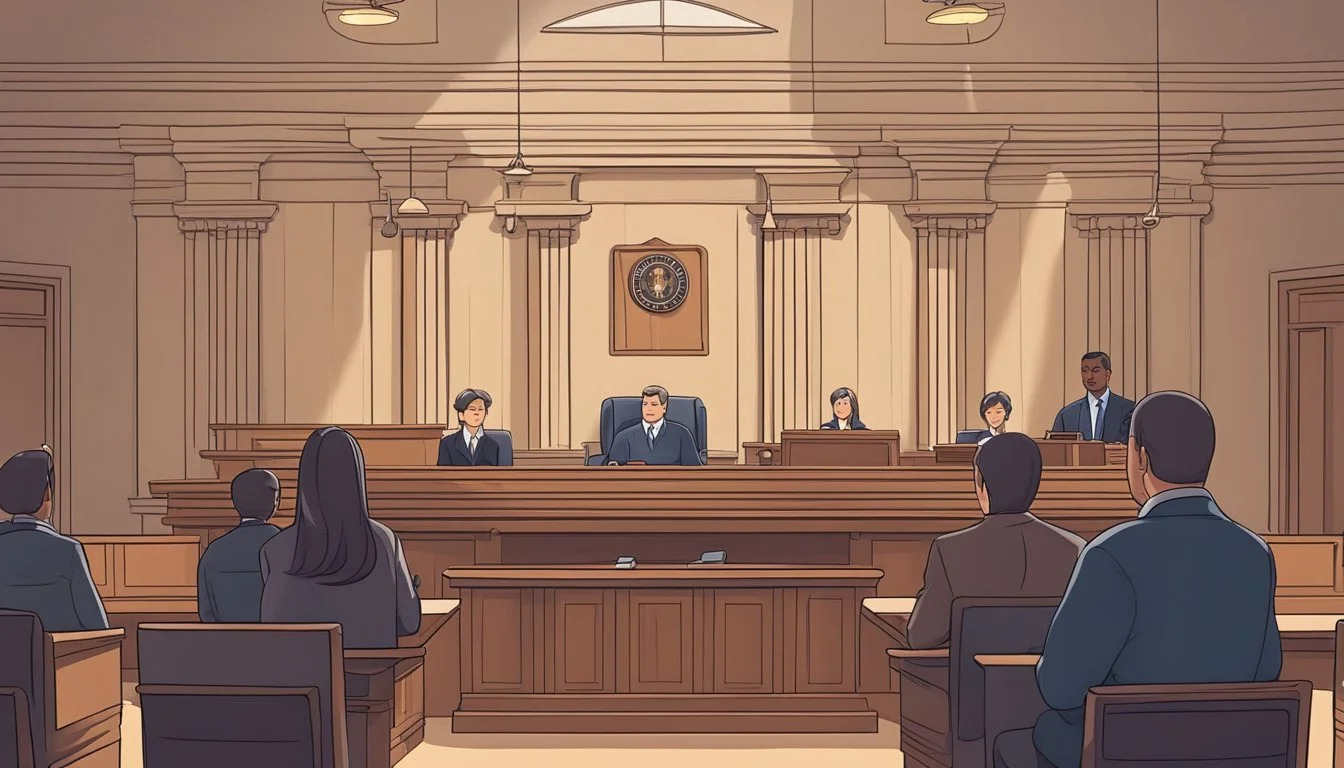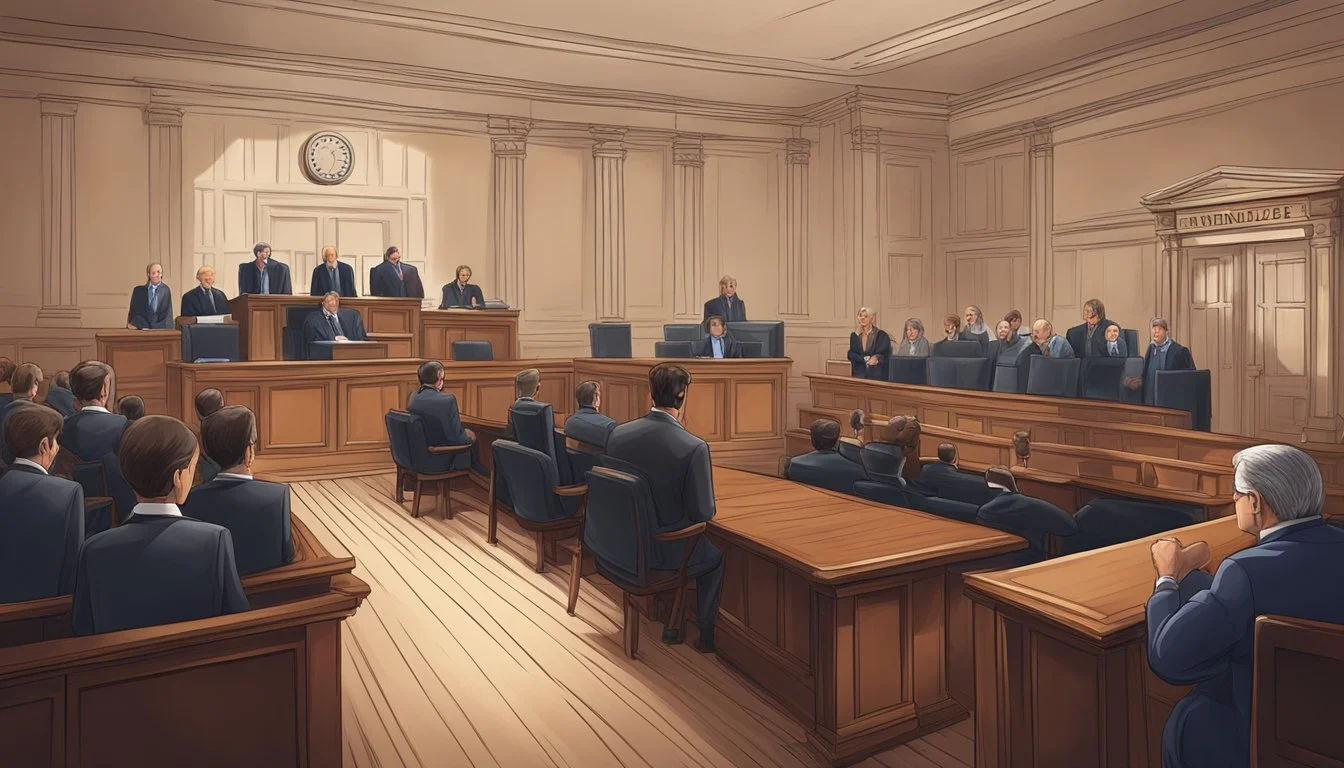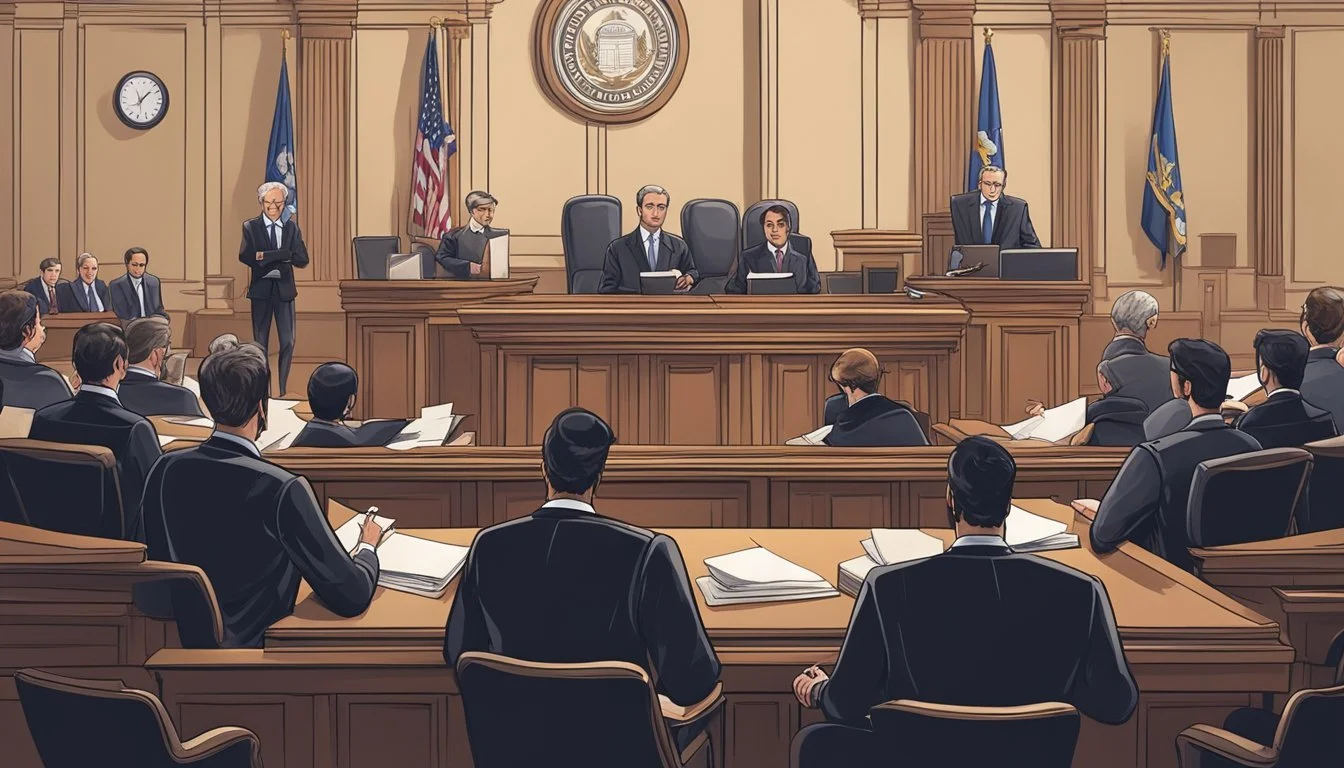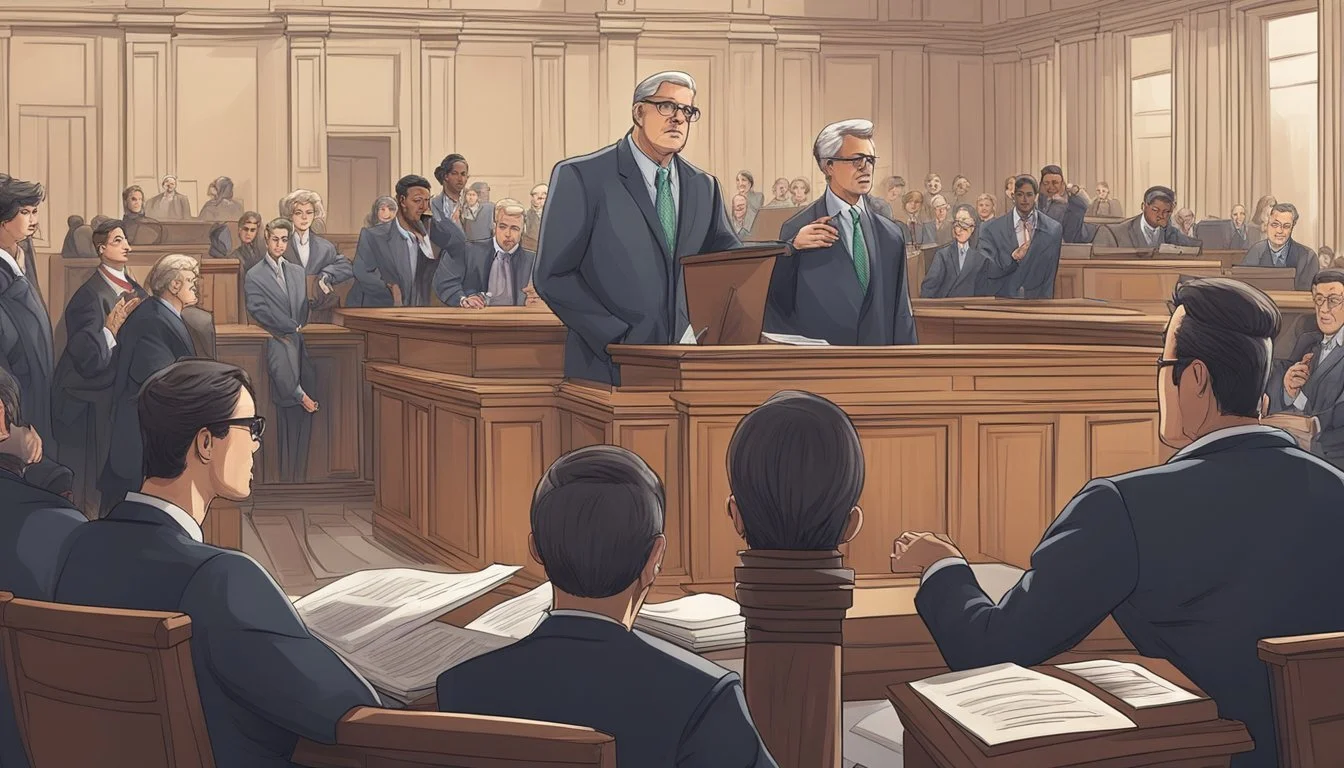Child Abuse Reporting Laws
The Menendez Case's Lasting Impact on Legal and Social Reforms
The Menendez brothers case, which shocked the nation in 1989, continues to influence child abuse reporting laws and societal perceptions of abuse victims. Lyle and Erik Menendez, convicted of murdering their parents, claimed they had suffered years of sexual and physical abuse. Their trial sparked legal reforms in several states, modifying child abuse reporting requirements and statutes of limitations.
The case highlighted the complex psychological impacts of childhood trauma and delayed disclosure of abuse. It challenged preconceptions about male victims of sexual abuse and raised awareness of the long-term effects of adverse childhood experiences. The public scrutiny of the Menendez case contributed to a shift in how society views and responds to allegations of child abuse.
Recent developments have brought renewed attention to the brothers' claims. Lawyers have presented what they describe as newly-discovered evidence supporting the abuse allegations. This has reignited discussions about the case and its broader implications for child protection laws and the criminal justice system's handling of abuse-related crimes.
Historical Context of Child Abuse Reporting Laws
Child abuse reporting laws have evolved significantly since their inception, shaped by changing societal attitudes and high-profile cases. Key legal milestones have strengthened protections for children and expanded reporting requirements over time.
Evolution of Child Abuse Reporting
The first mandatory reporting laws emerged in the 1960s, focusing primarily on physical abuse. Initially, these laws targeted physicians, requiring them to report suspected cases of child maltreatment.
By the 1970s, most states had expanded their laws to include other forms of abuse and neglect. The scope of mandated reporters also grew to encompass teachers, social workers, and other professionals who regularly interact with children.
The 1974 Child Abuse Prevention and Treatment Act (CAPTA) marked a pivotal moment. It provided federal funding to states in exchange for establishing child abuse reporting procedures and investigation systems.
Critical Legal Milestones
In 1989, the Menendez case in Beverly Hills shocked the nation, highlighting gaps in reporting laws. The brothers' therapist knew of the abuse but did not report it, sparking debates about confidentiality versus child protection.
The Los Angeles County District Attorney's office prosecuted the case, bringing national attention to the complexities of child abuse reporting.
Civil rights cases like Brown v. Board of Education and Mendez v. Westminster, while focused on school segregation, indirectly influenced child welfare laws by emphasizing equal protection for all children.
Recent amendments to reporting laws have expanded the list of mandated reporters and clarified reporting obligations, aiming to better safeguard children from abuse and neglect.
The Menendez Brothers' Case Overview
The Menendez brothers' case shocked the nation in 1989 and continues to captivate public interest decades later. This high-profile murder case involved two young men who killed their wealthy parents in their Beverly Hills mansion.
Profile of Lyle and Erik Menendez
Lyle and Erik Menendez were born into a life of privilege. Lyle, born in 1968, and Erik, born in 1970, grew up in an affluent family. Their father, Jose Menendez, was a successful entertainment executive.
The brothers attended elite schools and enjoyed a luxurious lifestyle. However, beneath the surface, their family life was reportedly troubled. Both brothers later claimed they suffered years of abuse at the hands of their father.
This alleged abuse became a central point in their defense strategy during the trials. It sparked debates about family dynamics and the long-term effects of childhood trauma.
The 1989 Killings of Jose and Kitty Menendez
On August 20, 1989, Jose and Kitty Menendez were shot multiple times in their Beverly Hills home. The brutality of the crime shocked investigators and the public alike.
Initially, the brothers were not suspects. They claimed they had been at a movie theater during the time of the murders. However, their lavish spending spree following their parents' deaths raised suspicions.
Months later, Erik confessed to his psychologist. This confession eventually led to the arrest of both brothers in March 1990. The case quickly gained national attention due to its sensational nature.
The Trials and Public Reaction
The Menendez brothers faced two trials. The first, in 1993, ended in deadlocked juries for both brothers. The televised proceedings captivated audiences nationwide.
In the second trial in 1995, the brothers were found guilty of first-degree murder. They received life sentences without the possibility of parole.
Public opinion on the case was divided. Some viewed the brothers as cold-blooded killers motivated by greed. Others sympathized with their claims of abuse and saw the murders as acts of desperation.
The case has continued to generate discussion and debate. In October 2024, the Los Angeles County District Attorney recommended resentencing for the brothers, potentially reopening this infamous chapter in criminal history.
Child Abuse and the Defense Strategy
The Menendez brothers' defense strategy centered on allegations of abuse and its psychological impact. This approach sparked debates about the role of childhood trauma in criminal cases.
Allegations of Abuse in the Menendez Household
Lyle and Erik Menendez claimed they suffered years of physical, emotional, and sexual abuse at the hands of their father, Jose Menendez. Their mother, Kitty, was accused of enabling the abuse. The brothers' defense team argued that this long-term abuse led to the fatal shooting of their parents in 1989.
These allegations shocked the public, as the Menendez family appeared wealthy and successful from the outside. The case highlighted how abuse can occur in any socioeconomic class.
Psychological Trauma and its Legal Implications
The defense strategy relied heavily on the psychological effects of prolonged abuse. Experts testified about the brothers' PTSD and the impact of sexual violence on their mental state.
This approach raised questions about the legal system's handling of trauma-induced crimes. The defense argued for manslaughter rather than murder, citing the brothers' impaired mental state due to years of abuse.
The case brought attention to the complex relationship between childhood trauma and criminal behavior. It challenged traditional notions of criminal responsibility and sparked discussions about appropriate sentencing for abuse survivors who commit violent acts.
Impact of the Menendez Case on Reporting Laws
The Menendez brothers' trial sparked significant changes in child abuse reporting laws and public understanding of familial abuse. It highlighted gaps in existing systems and prompted legal reforms.
Changes in Legal Policies
New evidence requirements emerged for abuse allegations in criminal cases. Courts began to consider long-term family dynamics more carefully when evaluating claims of self-defense. Some states implemented mandatory reporting laws for therapists who suspect child abuse.
The case influenced how district attorneys approach family violence cases. It led to more thorough investigations of abuse claims, even in affluent households. Prosecutors now often seek expert testimony on trauma and its effects.
Some jurisdictions revised their habeas corpus petition processes for cases involving alleged childhood abuse. This allowed for reexamination of convictions where new abuse evidence surfaced.
Shifts in Public Perception
The Menendez trial brought child abuse in seemingly perfect families into the spotlight. It challenged the notion that abuse only occurs in certain socioeconomic groups.
Public awareness of the signs of child abuse increased. Schools and community organizations implemented new training programs for identifying potential abuse cases.
The case sparked debates about the role of therapy in uncovering repressed memories of abuse. This led to more scrutiny of therapeutic practices and their legal implications.
Media coverage of the trial educated the public about the complexities of familial abuse. It encouraged more open discussions about domestic violence and its long-term effects on victims.
Media Representation and Public Discourse
The Menendez brothers case has been a subject of intense media scrutiny and public debate since 1989. Journalists, filmmakers, and true crime enthusiasts have shaped the narrative surrounding the murders through various mediums.
True-Crime Narratives and their Influence
True-crime storytelling has played a significant role in shaping public perception of the Menendez case. Initially, tabloids sensationalized the murders, focusing on the brothers' affluent lifestyle and shocking nature of the crimes. As media evolved, more nuanced perspectives emerged.
Television specials and documentaries began exploring the family dynamics and abuse allegations. This shift prompted viewers to reassess their views on the case. The release of the Menendez brothers' confession tapes in the 1990s further fueled public interest and debate.
Social media platforms have recently reignited discussions about the case, with younger generations discovering and reexamining the story through viral posts and online discussions.
Notable Adaptations and Documentaries
Several high-profile adaptations have brought the Menendez case to new audiences. The 2017 TV series "Law & Order True Crime: The Menendez Murders" offered a dramatized account of the events, sparking renewed interest in the case.
In 2022, Ryan Murphy's "Monsters: The Lyle and Erik Menendez Story" provided a fresh perspective on the brothers' experiences. This true-crime drama delved into the family's history and the alleged abuse, challenging viewers' preconceptions.
Documentaries like "Truth and Lies: The Menendez Brothers" have aimed to present a balanced view of the case, featuring interviews with family members and legal experts. These productions have contributed to ongoing discussions about the justice system and child abuse.
Contemporary Relevance and Continuing Conversations
The Menendez case continues to shape legal and social discourse on child abuse reporting and family violence. Its impact reverberates through modern cases and ongoing reform efforts.
Modern Case Studies Related to the Menendez Case
Several recent cases have drawn comparisons to the Menendez brothers' trial. In 2019, a California teen was charged with killing his parents, claiming years of abuse. The defense strategy echoed elements of the Menendez case, highlighting the lasting influence on legal tactics in family violence cases.
The case of Gypsy Rose Blanchard also garnered attention. Blanchard, a victim of Munchausen syndrome by proxy, was convicted of involvement in her mother's murder. This case reignited debates on child abuse reporting and the psychological impacts of long-term abuse.
These modern cases often result in hung juries, mirroring the Menendez trials' initial outcomes. They continue to challenge societal perceptions of family dynamics and abuse.
Ongoing Legal Reforms and Advocacy
Advocacy groups have pushed for reforms in child abuse reporting laws since the Menendez case. California, the brothers' home state, has expanded its mandatory reporting requirements. These now include a broader range of professionals, including teachers and medical personnel.
Mental health experts argue for more nuanced approaches to reporting. They advocate for better training to identify signs of abuse and understand the complexities of family violence.
Some reforms focus on improving support for abuse survivors. The Felicitas and Gonzalo Mendez Learning Center, named after civil rights activists, offers programs addressing trauma and mental health in at-risk youth.
Sylvia Mendez, known for her role in desegregation efforts, has spoken about the intersection of education and child welfare. Her work highlights the ongoing need to address systemic issues that can contribute to family violence.




